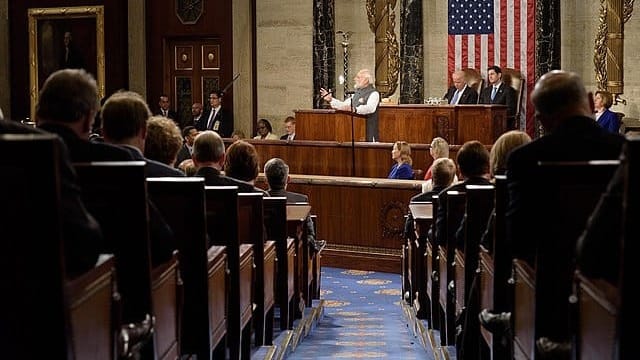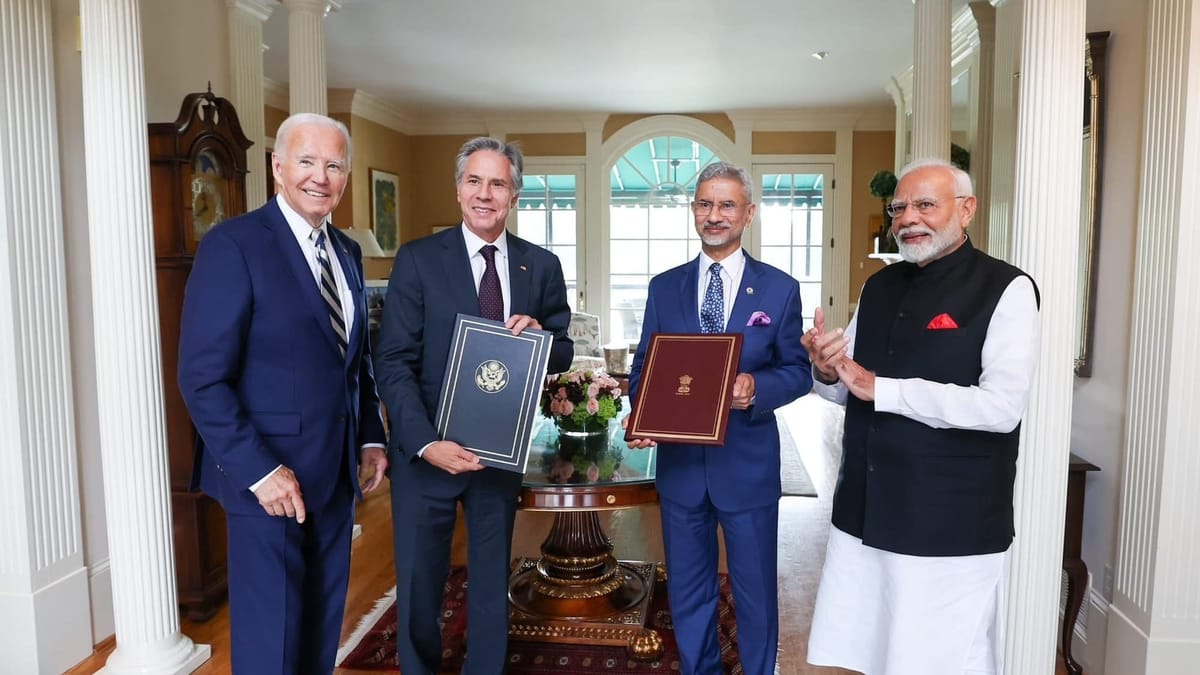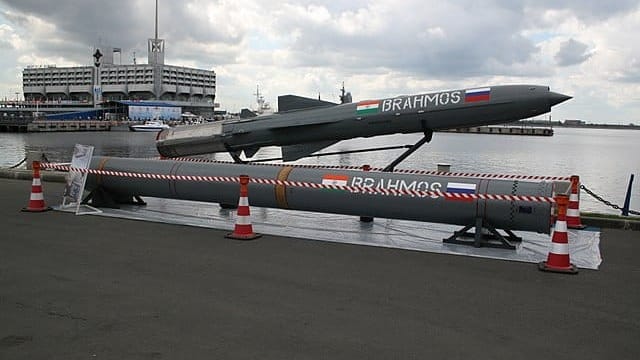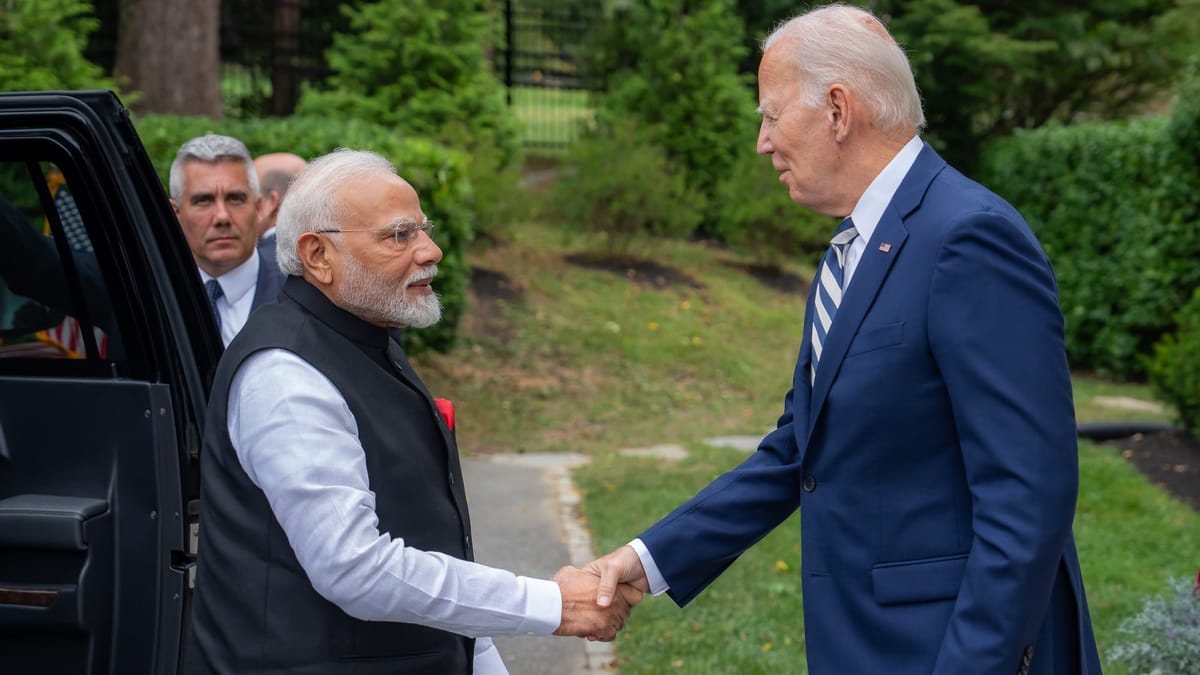
During Prime Minister Narendra Modi’s visit to the United States (US) in September 2024, President Joseph Biden and PM Modi reaffirmed their commitment to the US-India Comprehensive Global and Strategic Partnership, describing it as the “defining relationship of the 21st century,” and a cornerstone of global peace, security, and economic cooperation.
Economic partnership
India and the US are advancing their economic collaboration across various sectors, with the recent signing of the Indo-Pacific Economic Framework for Prosperity (IPEF) in September 2024. This initiative aims to strengthen economic resilience and competitiveness among 14 partner nations, collectively representing 40% of global GDP and 28% of global trade.
In healthcare, the new US-India Drug Policy Framework addresses synthetic drug trafficking, while the Bio5 partnership focuses on strengthening pharmaceutical supply chains. The Development Finance Corporation's investment of $177 million in Indian small businesses since mid-2023 highlights ongoing support for economic growth, including a $50 million loan to Panacea Biotech for producing child vaccines.
Collaboration between small and medium-sized enterprises (SMEs) has also been formalised through a Memorandum of Understanding (MoU). This agreement aims to ease trade, promote a green economy, and empower women entrepreneurs, alongside a commitment to climate-smart agriculture and regulatory alignment to support bilateral trade.
In the digital arena, the launch of the US-India Global Digital Development Partnership underscores the commitment to deploying emerging digital technologies across Asia and Africa, reflecting a growing emphasis on technological cooperation.
Investment flows reveal a compelling narrative, with total merchandise trade between India and the US reaching approximately $120 billion in 2024. India exported $77.5 billion to the US, while imports totalled $42.2 billion, solidifying the US's position as one of India's largest trading partners. In services, trade amounts to nearly $59 billion, reinforcing India's role as an important market for US exports.
Foreign direct investment (FDI) from the US to India has seen equity investments of nearly $66.7 billion from April 2000 to June 2024. US investments include technology, manufacturing, defence, and biotechnology, while Indian companies are diversifying their operations across different sectors in the US.
Agreements such as the Initiative on Critical & Emerging Technologies (iCET) established in 2023, focus on critical areas including semiconductors and cybersecurity. The signing of a MoU on Semiconductor Supply Chain and Innovation Partnership aims to further advance collaboration in semiconductor programmes and research.
Healthcare initiatives, such as a Strategic Framework for optimising biopharmaceutical supply chains and the Bio-X programme, highlight the commitment to fostering innovation and resilience in the healthcare sector.
The strong people-to-people connections fostered by the Indian diaspora in the US further adds to the bilateral relationship, with a notable presence in technology and academia. Currently, approximately 72 unicorn startups out of 648 in the US are led by Indian-origin founders, employing over 55,000 people.
Technology partnership
The US-India relationship is strengthening through strategic initiatives in sectors such as semiconductors, telecommunications, and advanced technology. A significant development is the establishment of a new semiconductor fabrication plant, supported by the India Semiconductor Mission and a partnership between Bharat Semi, 3rdiTech, and the US Space Force. This facility will produce high-demand components like infrared, gallium nitride, and silicon carbide semiconductors, creating opportunities in green energy, national security, and next-generation telecommunications.
 Delhi BriefingAmal Anzari
Delhi BriefingAmal Anzari
GlobalFoundries (GF) is strengthening collaboration with its new GF Kolkata Power Centre, aimed at driving innovation in chip manufacturing. This initiative will benefit industries such as electric vehicles, artificial intelligence (AI), Internet of Things (IoT) devices, and data centres. GF's exploration of cross-border technology and manufacturing partnerships is expected to aid research and development (R&D) and create jobs in both nations.
In the technology sector, IBM's recent agreements will integrate AI innovations with India’s Airawat supercomputer, advancing semiconductor research and AI capabilities. The collaboration in quantum computing is also expanding, with new research awards promoting innovations in AI, telecommunications, and sustainability.
The telecommunications sector is witnessing growth through efforts to deploy 5G infrastructure and initiatives like the Asia Open RAN Academy, supported by a $7 million investment. These advancements are set to benefit tech-driven sectors and support supply chains.
Initiatives under the Innovation Handshake are connecting startups and investors to accelerate investments in emerging technologies, fostering expanded innovation ecosystems between the two countries. The iCET has launched a new phase in bilateral relations, focusing on advanced technology areas, including AI, quantum computing, and advanced materials.
The iCET has awarded over $2 million in grants to 17 US-India joint research projects targeting AI and quantum technologies for societal benefit. Projects funded include AI-assisted cancer detection and the development of scalable quantum components, highlighting a shift towards tech diplomacy that positions cooperation in science and technology as a driver for social good and geopolitical strategy.
While AI, quantum, and critical materials are currently at the forefront of the US-India tech agenda, opportunities for broader collaboration remain significant. With climate change posing global challenges, clean technology and climate innovation are emerging as areas of interest. India's ambitious renewable energy targets and the US’s technological prowess create a unique opportunity for joint initiatives in carbon capture, battery storage, and sustainable agriculture.
Additionally, both countries are exploring collaborations in cybersecurity, space exploration, and biotechnology. India’s expanding tech industry and rich talent pool complement the US’s advanced research institutions, making both countries ideal collaborators in these fields.
Defense partnership
Defence cooperation has emerged as a crucial aspect of economic relations, with the US becoming a primary supplier of advanced military equipment and technology to India. The conclusion of the India-US Defence Industrial Cooperation Roadmap in May 2023 and the launch of the Defence Acceleration Ecosystem (INDUS X) further will aid collaboration in defence technology.
India's acquisition of 31 General Atomics MQ-9B drones, valued at $3.5 billion, significantly strengthens its Intelligence, Surveillance, and Reconnaissance (ISR) capabilities, aligning with deeper defence ties with the US. Additionally, the US-India Defence Industrial Cooperation Roadmap is aiding co-production initiatives in major sectors. Notably, Lockheed Martin and Tata Advanced Systems Limited are collaborating to establish a Maintenance, Repair, and Overhaul (MRO) facility for the C-130J Super Hercules aircraft, which will support India's fleet and its international partners. Additionally, a uniform 5% Goods and Services Tax (GST) on the MRO sector simplifies the tax structure, promoting growth in India's aviation ecosystem.
 Delhi BriefingAmal Anzari
Delhi BriefingAmal Anzari
The implementation of the Security of Supply Arrangement (SOSA) and a Memorandum of Agreement regarding Liaison Officers further strengthens defence and security cooperation between India and US. SOSA will facilitate reciprocal priority support for goods and services that promote national defence, enabling both countries to address supply chain disruptions efficiently.
Moreover, the US Department of Defense is advancing efforts to conclude the Reciprocal Defence Procurement (RDP) Agreement, aimed at standardising and interoperating defence equipment with allied nations. The framework also endorses integrating the Indian defence industry into global supply chains, highlighting the potential for collaboration in areas such as undersea domain awareness, air combat, and munitions systems.
With India's commitment to indigenisation and the domestic construction of nuclear submarines, substantial opportunities exist in the defence sector, particularly in technology transfer, manufacturing, and support services.
Clean energy partnership
The partnership between the US and India is making significant strides in clean energy supply chains, emphasising manufacturing in renewable technologies. The initial phase aims to unlock $1 billion in multilateral financing, focusing on solar, energy storage, power grid technologies, and zero-emission vehicles. Investments include a $425 million loan to Tata Power Solar for solar cell production and $500 million to First Solar for solar module manufacturing.
To equip India's domestic clean energy supply chain, the US and India are working to secure $1 billion in funding through the International Bank for Reconstruction and Development (IBRD). This funding will support manufacturing capacity for technology sectors, including solar, wind, battery storage, and energy grid systems. Near-term investment opportunities will target the expansion of manufacturing capacity in segments such as solar wafers and next-generation solar cells, wind turbine components, power transmission infrastructure, energy storage solutions including batteries, and components for electric vehicles (EVs) and zero-emission buses.
 Delhi BriefingAmal Anzari
Delhi BriefingAmal Anzari
The U.S. Bipartisan Infrastructure Law and Inflation Reduction Act aim to revive clean energy manufacturing, while India's Production Linked Incentive Schemes have invested over $4.5 billion in clean energy manufacturing. Continued policy development will be crucial to maintaining investment and addressing global market dynamics.
Changing ties and strategic priorities
The US–India relationship has strengthened significantly over the past three decades, marked by increased collaboration across strategically important sectors such as defence and technology, along with bilateral and multilateral initiatives.
As the US presidential election approaches, differing approaches to India are emerging. A transactional stance is anticipated, focusing on scrutinising the trade imbalance and migration issues, with concerns regarding India's position within the global trade framework. In contrast, continuity in foreign policy is expected, emphasising values and maintaining support for initiatives like the Quadrilateral Security Dialogue (Quad), while also bringing greater attention to human rights and democratic practices.
Path ahead
The evolving US-India relationship under Modi 3.0 reflects a partnership built on shared interests in economic growth, technology, and defence cooperation. Both nations are strategically aligned to leverage their strengths, with significant investments in sectors like clean energy and advanced technology. As India aims for economic resilience and sustainable development, the US provides support through initiatives that promote innovation and infrastructure development.
However, the partnership is not without challenges. Upcoming US elections may influence bilateral dynamics, as differing political approaches could reshape the focus on trade, human rights, and migration issues. Sustained engagement from both governments and the private sector will be required in navigating these complexities while nurturing a collaborative environment. Ultimately, the trajectory of US-India relations will hinge on mutual commitment and adaptability to global shifts.

